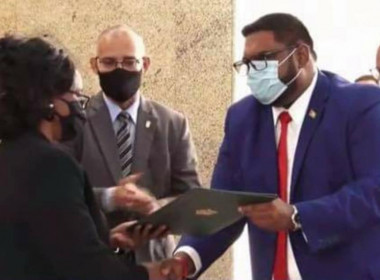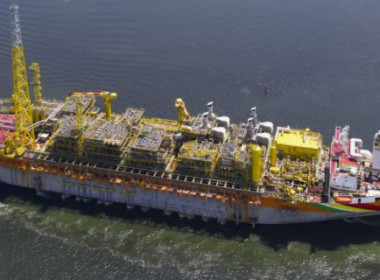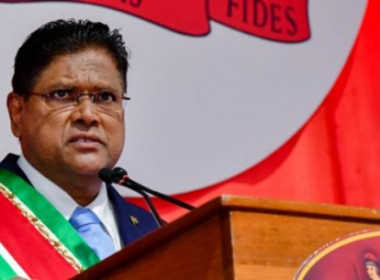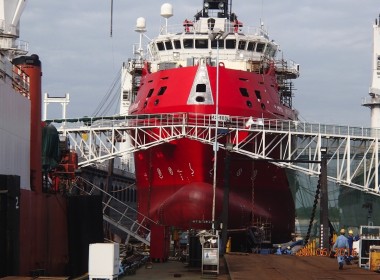COLUMN | Newcomers claim the glory? Guyana, Suriname and the other contenders [Offshore Accounts]

The surprising triumph of 18-year-old British tennis player Emma Raducanu in the US Open tournament last weekend shows that newcomers can overcome the odds and succeed. Ms Raducanu arrived at Flushing Meadows virtually unknown at the start of the tournament, having dropped out of Wimbledon in the round of 16, but she became the first qualifier of either sex to reach, let alone win, a grand slam final in the era of professional tennis.
As oil prices recover, new players are also emerging on the energy stage to challenge the long-established OPEC producers. Some of the biggest and best prospects in oil and gas now lie in territories long ago written off as “moose-pasture,” which was how one seismic survey boss dismissed such frontier acreage to me a while back.
First and foremost is a run of more than twenty successful exploration wells off the coast of South America.
Guyana and Suriname
In a 1978 report, the World Bank rated Guyana and Suriname as countries “currently carrying on intensive exploration activity” with “favourable geological prospects for oil/gas discoveries,” alongside such persistent un-achievers as Ethiopia, Jamaica and Korea (here).
Fast forward forty years: the pair of small South American states are now the hottest property in the entire offshore oil and gas industry. It’s taken four decades for Guyana and Suriname to move from tiny onshore production with nodding donkeys to making massive deepwater discoveries.
Now, they are on a roll, and the growth of three major American oil companies depends on their success in these sparsely populated states on the fringes of the North Atlantic: partners ExxonMobil and Hess in Guyana, and Apache in Suriname, which holds a 50 per cent stake in Block 58, together with operator TotalEnergies there.
10 rigs and 10 FPSOs in Guyana?
Last month, a senior vice president at Hess told the Offshore Technology Conference in Houston that “the Guyana-Suriname basin may host as many as ten rigs next year.” Hess CEO John Hess told investors at the end of July that there could be “at least” six floating production storage and offloading (FPSO) vessels operating there by 2027, and perhaps as many as ten, when the already known discoveries in Guyana are appraised and brought to development.
Already Hess’ partner in Guyana’s prolific Stabroek block, ExxonMobil, has mobilised six drillships there, including four from Noble Corporation. Exxon and Hess claim that they have already discovered over nine billion barrels of oil equivalent off the capital Georgetown, in water depths of over 1,500 metres. ExxonMobil is operator with 45 per cent interest in Stabroek, Hess is a partner with 30 per cent stake, and CNOOC Overseas of China holds the remaining quarter of the block.
Destiny and Unity from SBM
The first production from their Stabroek discoveries was achieved through the leased FPSO Liza Destiny, owned by SBM Offshore. First oil came online from Liza field just before Christmas Day in 2019. Liza Destiny is a VLCC conversion with boilerplate capacity of 158,000 barrels of oil per day. Already oil production through the unit has seen Guyana surpass long-term OPEC member Brunei in crude output. Next year it will likely surpass Equatorial Guinea and Vietnam. By the end of the decade Guyana will probably have surpassed the UK and Oman, if current forecasts are correct.
ExxonMobil and Hess’ next FPSO for Guyana, Liza Unity, has even bigger topsides than the first, with a gross production capacity of 220,000 barrels of oil per day. Liza Unity is already underway, sailing from Keppel’s shipyard in Singapore to Guyana; dramatic drone footage of the sailaway is here. Exxon and Hess say that the Liza 2 development is on track to achieve first oil through this second SBM-owned FPSO in early 2022.
Prosperity to follow
And the production line continues:
“Our third oil development on the Stabroek block at the Payara field is expected to achieve first oil in 2024, also with a gross capacity of 220,000 barrels of oil per day,” Mr Hess reported (here). The company noted that the first production well for that field has already spudded, and that engineering work on SBM’s Prosperity FPSO is already in progress.
Hess also reported that engineering work on the fourth development in the Stabroek block is underway, with plans for a production there to start in 2025. The partners estimate that this could deliver average production of between 220,000 and 250,000 barrels per day, as well.
In the second quarter alone, the partners announced three more exploration discoveries in Stabroek.
Breakeven at US$35, sell at US$70
What is key to the success of Hess and ExxonMobil in Guyana is that breakeven costs there are well below current oil prices.
“Our three sanctioned oil developments have a breakeven Brent oil price of between US$25 and US$35 per barrel,” Mr Hess boasted.
Meanwhile, ExxonMobil’s senior vice president Jack Williams has said that ExxonMobil expects “double-digit returns” from Stabroek.
Contrast that to the four to eight per cent returns Equinor expects to make from its investment in offshore wind (here), a renewables market that ExxonMobil has repeatedly shunned, preferring to focus on investing in Guyana’s oil and gas potential.
High margin, high stakes
Assume that oil prices remain in the US$70 region for the rest of the decade, and do the maths. One million barrels of production a day with a US$35 per barrel margin above cost creates US$12 billion of annual free cash flow for the companies and the Guyanese state to share (or to bicker and litigate over, as the case may be). Bearing in mind that Guyana has a population of less than 800,000 people, that’s an enormous windfall.
Already unions are complaining that workers in oil and gas are not paid enough (here) and that efforts by employers to prevent workers in the oil sector organising are “unconstitutional,” which union officials say, “smacks of gross disrespect to the Guyanese working-class.”
Exxon has fought back with a slick public relations war, like this video, emphasising its contribution to the economy.
The way forward?
The oil discoveries are so large and the margins so high that there is intense political competition over how the proceeds of the oil boom should be spent, how much ExxonMobil and its partners should be taxed, and how Guyana can develop its resources sustainably in a world where oil production is seen as dirty and polluting.
These themes culminated in a bitter political standoff in 2020, when the result of the general election was contested, and the incumbent president David Granger refused to concede defeat for several months (here).
Compression module failures cause angst
Now, the local press and environmentalists are furious that compression module failures on Liza Destiny have led to the FPSO flaring about 16 million to 18 million cubic feet (453,000 to 509,000 cubic metres) of gas per day, rather than reinjecting it into the reservoir. Flaring methane is seen as a sign of ExxonMobil’s arrogance and disrespect for the environment by many local commentators in Guyana, but the topic is complicated (here).
Whether the country is charging ExxonMobil a fair tax rate for its production, and whether the Guyanese government is using the oil revenues wisely, are going to be the two biggest political issues in Guyana over the next decade.
Game on.
Suriname joins the match
Over the maritime border in Suriname, TotalEnergies and its partner Apache have the drillship Maersk Valiant and the semi-sub Maersk Developer working offshore in Block 58, whilst CGX Resources is also drilling two exploration wells with a third Maersk Drilling deepwater unit, Maersk Discoverer.
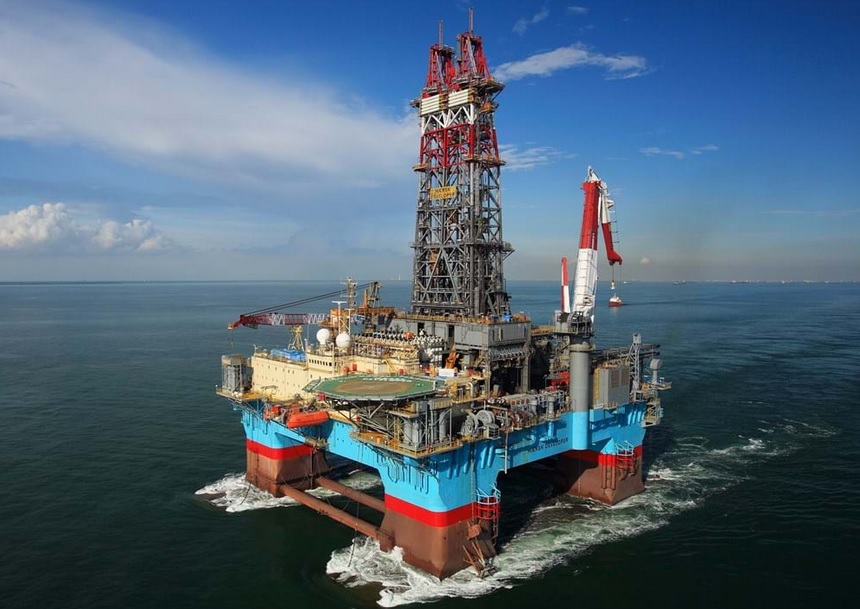
TotalEnergies and Apache have had an incredible run of success in their drilling offshore Suriname in Block 58. At the end of July, the pair announced that they made their fifth exploration discovery, finding oil at the Sapakara South-1 delineation well in 850 metres of water. This comes on top of the earlier successful exploration wells at Maka Central, Sapakara West, Kwaskwasi and Keskesi since first oil was struck in January 2020.
In June, Yinson of Malaysia announced that it had won the contract for preliminary front-end engineering design for a 120,000-barrel-per-day FPSO for TotalEnergies in Suriname. Upstream estimated that the unit would cost between US$1 billion and US$1.5 billion.
TotalEnergies and Apache are not alone
Ubiquitous ExxonMobil and its partner, block operator Petronas Carigali, also reported in December last year (here) that they had made an oil and gas discovery, named Sloanea. This wildcat was drilled in Block 52, approximately 75 miles (120 kilometres) offshore, north of Suriname’s capital city, Paramaribo.
The Sloanea discovery prompted the state oil company of Suriname, Staatsolie, to announce that it believed the country could be host to about 30 trillion cubic feet (849 billion cubic metres) of gas, and that a shore-based LNG plant might be needed to process it, or possibly an offshore FLNG unit.
ExxonMobil has also strengthened its presence in Suriname by acquiring a stake in Block 59 in 2020, joining partners Hess and Equinor there.
Shell meanwhile announced that it had farmed in to Block 42 last year. Shell took over the operatorship of the block from Kosmos Energy.
Tullow holds Block 47, but is currently assessing how to proceed after it drilled a dry hole in Suriname with the drillship Stena Forth earlier this year. Coming on the back of two disappointing wells in Guyana in 2020, Tullow has been the one company to be disappointed in both Guyana and Suriname (here).
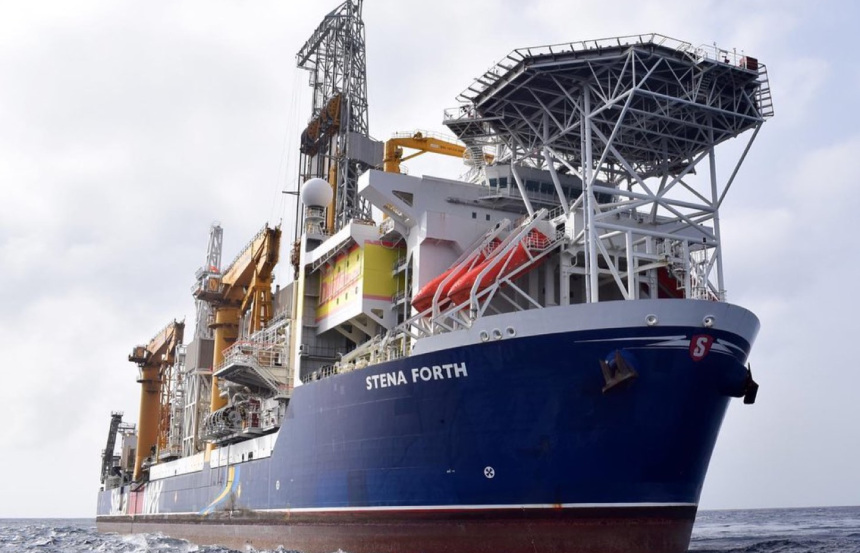
Meanwhile flush with the proceeds of its billion-dollar tax victory over the Indian government (here), Cairn Energy is set to shoot 3D seismic offshore Suriname in Block 61 later this year with a Shearwater spread.
We covered Suriname’s fragile politics, and difficult past thirteen months ago (here). Since then, the country’s projected oil reserves have increased significantly with TotalEnergies and Petronas’ discoveries. The hard part will be maintaining social and political cohesion as the country waits for the oil to flow and the cash to come in.
Holding a winning lottery ticket is frustrating if you have to wait years for the pay-out. So far, Suriname and Guyana have managed to keep their developments on track, and to maintain their democratic political systems, despite the election standoff in Georgetown in 2020.
We wish them every success after their early triumphs, as we do for Emma Raducanu.
The rest
Guyana and Suriname are not the only frontier offshore states coming to the forefront, as the oil and gas industry rebounds from the crisis of 2020. South Africa, Senegal, Cyprus, and Turkey all contain large, recently discovered reserves that are moving slowly to production. We hope to cover them in coming weeks and months.
Norway and Saudi Arabia have made getting rich from hydrocarbons look easy. Others have not been so lucky, even when reserves are in place.
High costs and a remote location have seen Premier Oil (now Harbour Energy)’s attempts to develop its discoveries off the Falkland Islands come to nothing. Several major gas fields in Indonesia, including the huge Abadi discovery in the Timor Sea, and the IDD project off Kalimantan that Chevron was working on, remain undeveloped, due to poor project economics.
Elsewhere, offshore projects have been mired in conflict.
Violence, wrangling, and failure
Papua New Guinea and Timor Leste have seen major offshore developments stymied by state interference and wrangling between governments and operators. Woodside’s massive discoveries in Myanmar look set to remain on hold until the political situation in the country stabilises after the brutal military coup in February (here). On Friday, Reuters reported here that at least twenty people were killed in fighting between militias and Myanmar’s ruling military, in what reporters described as the worst violence since opponents of the junta called for a people’s defensive war.
In Mozambique, insurgency in Cabo Delgado province and a massacre by Islamist rebels in the town of Palma in March led to TotalEnergies declaring force majeure on its US$20 billion LNG plant there, although ENI is moving ahead with its deepwater FLNG project offshore. ENI expects to have first gas from the Coral Sul field in 2022 (here).
Mozambique needs the revenue from Total’s gas plant to kick-start its enfeebled economy, but without peace in Cabo Delgado, the project will not resume, enhancing tensions in the impoverished country, which is already reliant on Rwandan troops to supress the guerrillas. My colleague Trevor Hollingsbee covered the maritime aspects of the conflict here last week.
Cambodia’s shut-in dreams
Meanwhile, Cambodia shows that even bringing an oilfield to production is no guarantee of success. Cambodia’s first offshore production ended in fiasco when KrisEnergy went bust in April. The government and KrisEnergy’s creditors are now litigating over the oil in the tanker that was holding the paltry production from the now shut-in Apsara oil field in Block A (here).
Reserves in the country’s Block A were initially estimated at 400 million to 500 million barrels, and Cambodian prime minister Hun Sen was confident that the country would be potentially generating billions of dollars in revenue. But KrisEnergy’s low production rates and rapid collapse mean that estimates have now been downgraded sharply, and the only winner seems to be Chevron, which sold KrisEnergy the block for US$65 million in 2012, after deeming it uneconomic.
Cambodia shows that even when frontier oil is found, low recoverability and a high cost of extraction can make discoveries unviable.
New frontiers, high hopes
Now new frontier exploration drilling is announced in the Philippines by Forum Energy, in Morocco by Chariot, and in Sao Time and Principe and Namibia by Shell. Will these be exploration aces like Guyana or Suriname?
Often frontier acreage comes up dry. Tullow Oil mobilised the deepwater drillship Stena Forth all the way around the Straits of Magellan to drill the Marina-1 well offshore Peru in early 2020 (great video here). It proved a duster and nearly drove Tullow to insolvency. Even ExxonMobil has suffered failure in Guyana. Its first two exploration wells in the Canje block came up dry. It is now trying again and has just spudded a third well with the Stena DrillMAX DP drillship at the Sapote-1 wellsite. TotalEnergies is a 35 per cent participant in the Canje block.
Emma Radacanu was the first British woman to reach a grand slam final since Virginia Wade won Wimbledon in 1977. Upsets and surprises do occur in oil and gas as much as in sport. Will there be other contenders to emulate Guyana and Suriname?
Let’s hope it doesn’t take another forty years.
For more news, opinion and vessel reviews as part of this month’s Offshore Week, click here.


![COLUMN | Newcomers claim the glory? Guyana, Suriname and the other contenders [Offshore Accounts]](https://www.bairdmaritime.com/wp-content/uploads/OFFSHORE-WEEK-Banner-860x130-2.gif)
